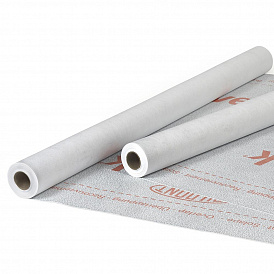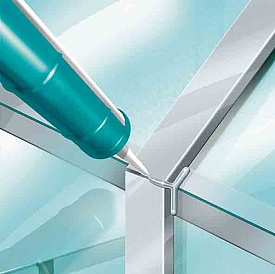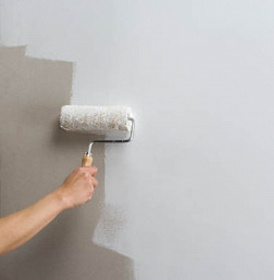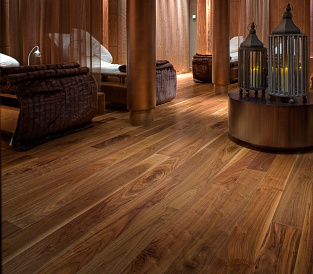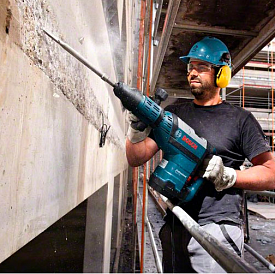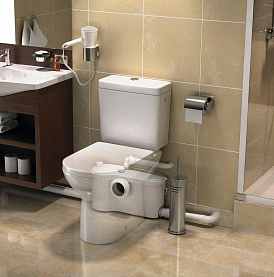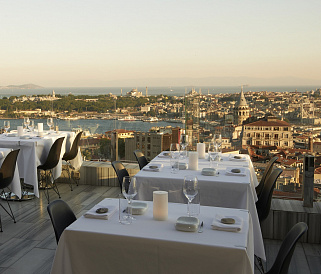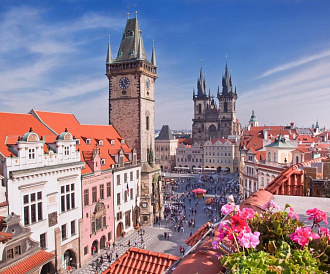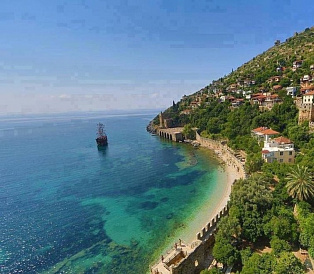9 best insulation for home
In a private house, in contrast to a multi-storey building, there is much more heat loss. The heated air from the heat gives the temperature to the walls, windows, roof and floor. In order not to spend even more money on heating, it is advisable to perform insulation, for which various materials are produced. We have prepared a rating of the best insulation for the house, based on the feedback from masters and ordinary customers, as well as the characteristics of the product. This will help you navigate the variety and choose a heater for the house with optimal properties for walls, attic or floor and at an affordable price.
How to choose a heater for the house
Our rating contains the most popular types of insulation. Before considering it, we will briefly touch upon the main parameters that should be paid attention to when choosing:
- Thermal conductivity. The indicator informs about the amount of heat that can pass through different materials under the same conditions. The smaller the value, the better the substance will protect the house from freezing and save money on heating. The best values are 0.031 W / (m * K), the averages are 0.038-0.046 W / (m * K).
- Vapor permeability. It implies the ability to pass through the particles of moisture (breathe), without delaying it in the room. Otherwise, excess moisture will be absorbed into building materials and promote the appearance of mold. Insulators are divided into vapor-permeable and impermeable. The value of the first is from 0.1 to 0.7 mg / (m.h.Pa).
- Shrinkage. Over time, some insulants lose volume or shape due to their own weight. This requires more frequent fixation points during installation (partitions, pressure plates) or use them only in a horizontal position (floor, ceiling).
- Mass and density. Insulation characteristics depend on density. The value ranges from 11 to 220 kg / m3. The higher it is, the better. But with increasing density of insulation increases and its weight, which must be considered when the load on building structures.
- Water absorption (hygroscopicity). If the insulation is exposed to direct exposure to water (accidentally spilled on the floor, the roof leaks), then it can either withstand it without harm, or deform and deteriorate. Some materials are not hygroscopic, while others absorb water from 0.095 to 1.7% by weight in 24 hours.
- Operating temperature range. If the insulation is laid in the roof or directly behind the heating boiler, next to the fireplace in the walls, etc., then maintaining an elevated temperature while maintaining the properties of the material plays an important role. The value of some ranges from -60 to +400 degrees, while others reach -180 ... + 1000 degrees.
- Combustibility. Insulation for the home can be non-flammable, slightly flammable and highly flammable. This affects the protection of the building in case of accidental fire or intentional arson.
- Thickness. The cross section of the seam or coiled insulation can be from 10 to 200 mm. This has an impact on how much space you need to take in the design for its placement.
- Durability. The service life of some heaters reaches 20 years, and others up to 50.
- Easy installation. Soft insulation can be cut a little with a margin and they tightly fill a niche in the wall or floor.Solid insulation is required to cut exactly in size, so as not to leave the "cold bridges."
- Environmental friendliness. It implies the ability to allocate pairs in the dwelling during operation. Most often it is a binder resin (of natural origin), so most materials are environmentally friendly. But during installation, some species can create a rich dust cloud, harmful to the respiratory system, and stabbing hands, which will require protection with gloves.
- Chemical resistance Determines whether it is possible to lay plaster over a heater and paint the surface. Some species are completely resistant, others lose from 6 to 24% of their weight when in contact with alkalis or acidic medium.
Advantages and disadvantages of different types of heaters
Having considered the criteria for choosing insulation for the house, we briefly formulate the advantages and disadvantages of the types of thermal insulation materials in the table for clarity.
|
TYPE OF HEATER |
ADVANTAGES |
LIMITATIONS |
|
BASALT BATTLE |
+ LOW HEAT CONDUCTIVITY + EASILY CUT AND DOWN + PARROPONICS + DOES NOT BURN + SMALL WEIGHT + RANGE OF THICKNESS FROM 50 TO 200 MM + DENSITY FROM 11 TO 200 KG / M3 |
MAY LOSE FORM -WATER WATERS -READING THE LAYER NEEDS RESPIRATORY PROTECTION -HIGH PRICE |
|
Foam polystyrene |
+ DURABILITY FOR COMPRESSION + LOW HEAT CONDUCTIVITY + LOW ABSORPTION + SAVING THE FORM AFTER YEARS + RANGE OF THICKNESSES FROM 20 TO 50 MM |
- IT IS NECESSARY TO CUT EXACTLY ABOUT THE SIZES - NOT SUITABLE FOR ROOF - RESPOND TO A HIGHLY COMBINED GROUP -MAXIMUM DENSITY 35 KG / M3 -HIGH PRICE - EATING ROONS |
|
STYROFOAM |
+ AVAILABLE PRICE + IS NOT AFRAID WATER + SAVES THE FORM + ECOLOGICALLY CLEAN + SUPPORTS MECHANICAL LOADS + DO NOT EAT ROUNDS + RANGE OF THICKNESS FROM 20 TO 50 MM + SMALL WEIGHT |
- FOR FULL - REQUIRES EXACT CUTTING WHILE LAYING -THE ANGLES DURING INSTALLATION - NOT SUITABLE FOR ROOFING -MEDIATE HEAT CONDUCTIVITY FROM 0.041 W / (m * K) - SMALL DENSITY |
|
GLASS |
+ AVAILABLE PRICE + GOOD SEALED + DOES NOT BURN + ENVIRONMENTALLY SAFE + RANGE OF 50-200 MM THICKNESSES + LIGHT |
COBLE OF HANDS AND HARM OF EASY AT INSTALLATION -HIGOSCOPICNA - LOSES THE FORM -MEDIATE HEAT CONDUCTIVITY FROM 0.04 W / (m * K) -LESS CHEMICAL RESISTANCE |
|
POLYESTER FIBERS |
+ DO NOT DRINK WATER + DO NOT LOSE THE FORM + LOW THERMAL CONDUCTIVITY COEFFICIENT + FREE FROM PENOL + Hypoallergenic + SHEETS BROKEN + SMALL WEIGHT |
-HIGH PRICE -MORE |
Rating of the best insulation for home
| Nomination | a place | Name of product | price |
| The best basalt insulation | 1 | Rockwool | 695 ₽ |
| 2 | Hotrock smart | 302 ₽ | |
| The best polystyrene insulation | 1 | Technicol XPS Technoplex | 1 100 ₽ |
| 2 | Penopleks Comfort | 980 ₽ | |
| The best foam insulation | 1 | Knauf Therm House | 890 ₽ |
| 2 | PSB S 15-O | 1 688 ₽ | |
| The best fiberglass insulation | 1 | Isover Warm Home | 660 ₽ |
| 2 | Ursa geo | 800 ₽ | |
| The best polyester fiber insulation | 1 | Shelter EkoStroy SHES Arctic | 1 780 ₽ |
The best basalt insulation
This category of insulation in the rating is also called stone or mineral wool. It is obtained by melting basalt rocks, during which thin villi are formed. The substance is completely natural, and natural resins are used for the bond.
Rockwool
Rating: 4.9
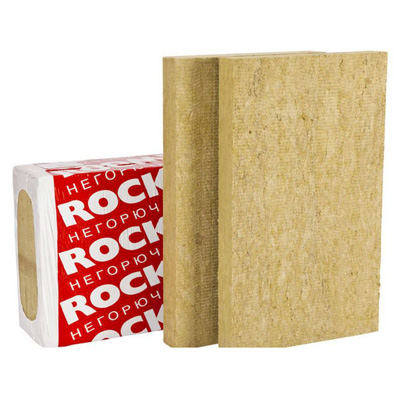
In the first place in the ranking of basalt heaters for the home is a product of the company from Denmark. Cotton wool is available in rolls and slabs, which is convenient for mounting on logs or when laying into walls. The material can be used for both indoor and outdoor insulation of the house. In terms of thickness, the manufacturer offers options from 50 to 100 mm with a density of 37 kg / m3. Stone wool is completely non-flammable and safe for residential use.Masters in the reviews are divided that you can buy it in various packaging of 6-12 sheets per pack, which is practical for different amounts of work. Suitable insulation for all building materials in the house. Wool fibers can withstand temperatures up to 1000 degrees, so it can be laid on even the walls of the fireplace.
Our experts liked the insulation for the house because of the availability of new technology Flexi. One of the edges of the sheet has a springy property and is further expanded after installation. Such an edge is specially marked by manufacturers and improves the tightness of installation, for which the product has been ranked among the best.
Virtues
- does not crumble during installation;
- excellent sound insulation;
- easy to fit;
- low weight with a density of 37 kg / m3.
disadvantages
- the whole body is itchy after laying;
- increases thermal conductivity when wet;
- absorbs water up to 1 kg per m2;
- you need more props for vertical mounting.
Hotrock smart
Rating: 4.8
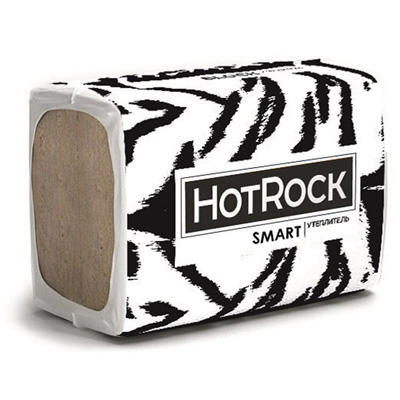
In second place in the ranking is a product from the Russian manufacturer. This insulation is available in the form of plates with a thickness of 50-100 mm and has a thermal conductivity of 0.036 W / (m * K). In its production, organic substances (resins) of no more than 2.5% were used, therefore during operation no odors are emitted in the house. The insulating layer does not fully support burning and can be used as a fire barrier in metal doors.
We included heat insulation in the rating of the best due to a good combination of price and quality, with which buyers agree in the reviews. The company guarantees the lifetime of the insulation in the house up to 50 years. Basalt plates are produced on German equipment, and a new furnace is used for smelting rock, which ensures good quality at an affordable price. Another material has compressibility up to 50%, against 30% of competitors, so the masonry is very dense and the insulating layer takes up less space in the room.
Virtues
- low weight - with dimensions of 1200x600 mm the plate weighs less than a kilogram;
- absolutely not burning;
- low thermal conductivity;
- has three safety certificates in Russia;
- suitable for cold attics, pitched roofs and floor insulation.
disadvantages
- water absorption 1.5%;
- loses its shape without proper fixation;
- density of 22 kg / m3 loses to competitors;
- not recommended for house walls.
The best polystyrene insulation
Extruded polystyrene foam is produced by foaming polystyrene. The result is a frozen foam with small cells that are isolated from each other. Thin walls do not allow the temperature to be actively transmitted, due to which the insulation effect occurs.
Technicol XPS Technoplex
Rating: 4.9
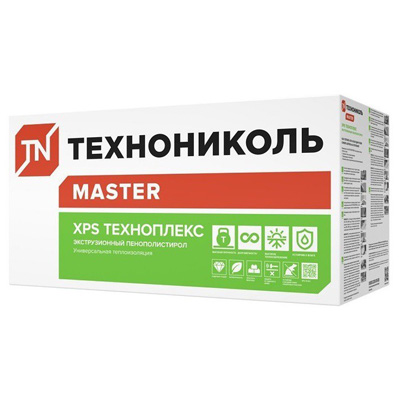
In this category of insulation in the first place is the product known for its white-green packaging. Insulation for home made in Russia. The material is produced in the form of plates with a thickness of from 20 to 100 mm, which the masters like in reviews, because it allows you to choose the optimal cross-section for different parts of the house. It is allowed to use heat insulation in the bathroom and in the kitchen, because it is capable of passing steam with a coefficient of 0.01 mg / (mchPa). The surface does not absorb water, preventing the development of the fungus.
Our experts liked the insulation because of its compressive strength of 0.1 MPa, with a strain of 10%. This allows you to warm the floor through the logs and not worry about the load on them. It can also be used when organizing underfloor heating in a house with laying pipes or cable. This effect was achieved by adding nanocarbon visible in a light gray tint. For this product, and pressed into the rating as the best for floor insulation.
Virtues
- large thickness range from 20 to 100 mm;
- low thermal conductivity of 0.032 W / (m * K);
- L-shaped edge for easy installation under the structure;
- almost does not absorb water (0.1%);
- high vibration resistance.
disadvantages
- high price;
- the substance burns and smokes strongly;
- produced only in slabs.
Penopleks Comfort
Rating: 4.8
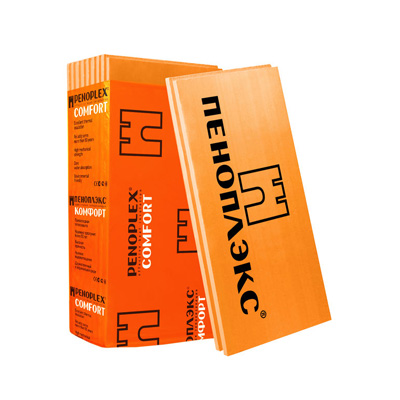
In the second place in the ranking is another domestic insulation, used for sound and heat insulation of the house. Extruded polystyrene foam has a thickness of 3-5 cm and is produced in sheets of 118x58 cm. It is sold in packs of 4-12 sheets. The coefficient of thermal conductivity is close to the minimum and amounts to 0.033 W per meter per Kelvin. The manufacturer assures the versatility of the heater in terms of both spatial distribution and temperature range. The substance does not deteriorate from precipitation and differs in compressive strength up to 0.18 MPa. But users in the reviews are divided, then the material can damage rodents in the house, so you should first remove them, and then carry out the installation.
We marked this heater in the rating as optimal for the thermal insulation of a balcony in a two-story house, a veranda or a closed terrace. This product is designed to preserve its properties even at a temperature of -50 degrees, so it is suitable for use in unheated rooms. Masters in the reviews recommend it for both internal and external insulation of the house.
Virtues
- keeps its shape well;
- universal on application;
- light;
- serves up to 50 years;
- does not spoil from water and frost.
disadvantages
- it is impossible to lay near the sources of heat, issuing a temperature in excess of 75 degrees;
- high price;
- combustible material;
- exact cutting required.
The best foam insulation
The material is obtained by foaming the polymer, but differs from the previous group of products in the ranking of larger cells. This technology is easier to implement, so insulation for the house is cheaper, but the density is one of the lowest.
Knauf Therm House
Rating: 4.9
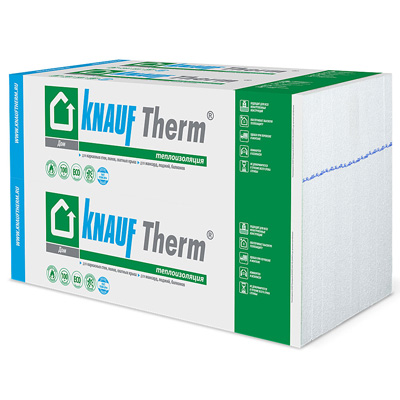
The first place in the ranking was a product of a well-known brand, the name of which directly indicates the purpose of the application - home insulation. Suitable for flooring in lags, insulation of pitched roof, laying in niches of walls. Environmentally friendly and during operation does not emit harmful gases into the room. The manufacturer claims the service life of insulation up to 100 years. The product is manufactured according to GOST 15588-2014 and has quality certificates. Unlike extruded species, this is not attractive to rodents.
Insulation is listed by experts in the rating as the lightest - a sheet weight of 100x60 cm with a thickness of 5 cm is 400 g. This is the best option for decorating the walls of the house, if the masonry therefore gives a greater load on the foundation and requires a minimum weight from the insulation layer so as not to harm the base . But due to the rigid structure of the master in the reviews advise to isolate the seams with foam to eliminate the “cold bridges”.
Virtues
- the lowest price in the entire rating of goods;
- a light weight;
- many options for the cross section and dimensions of the plates;
- not afraid of water.
disadvantages
- density is only 10 kg / m3;
- burns and emits toxic smoke at the same time;
- crumbles during installation;
- you need to accurately cut and additionally isolate the seams with sealant.
PSB S 15-O
Rating: 4.6
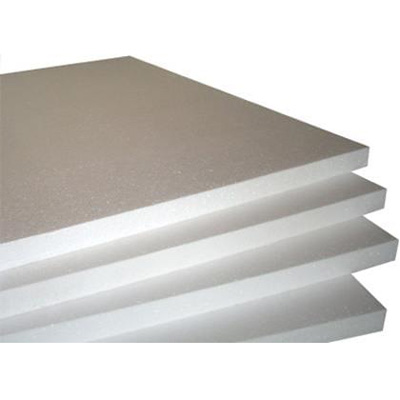
On the second place in the rating is a product of domestic producer, produced with a density of 10 kg / m3 This gives a light weight and minimal cost that many users like in reviews. But the tensile strength of the frozen foam is small and amounts to 0.05 MPa during compression, and if you try to bend, the material breaks. Thermal conductivity of insulation average - 0.042 W per meter per Kelvin. But the installation does not need numerous jumpers and fixing points, so it takes less time for laying in the house. The stove can be located in any spatial position.
We added insulation to the rating as having the widest range of sizes. Polyfoam is available with dimensions of 1x1 m, 1x1.2 m, 1x2 m, which is convenient for quick laying in the walls of the house to immediately sew a large area. By request, the manufacturer can provide other sizes required by the user.
Virtues
- resistant to aging;
- not exposed to moisture;
- do not spoil the microorganisms;
- ecologically safe.
disadvantages
- low density of 10 MPa;
- on sale is indicated in the old GOST (PSB-C15) and in a new way (PPS-10), which leads to confusion;
- burns strongly on contact with fire;
- need additional sealing joints.
The best fiberglass insulation
This type of product in the rating is popularly called glass wool. It is produced by smelting soda, sand, borax, limestone and glass combat. This gives thick fibers of various directions, effectively delaying heat transfer. It is worth the material is cheaper than analogs, but it hurts hard during installation.
Isover Warm Home
Rating: 4.9
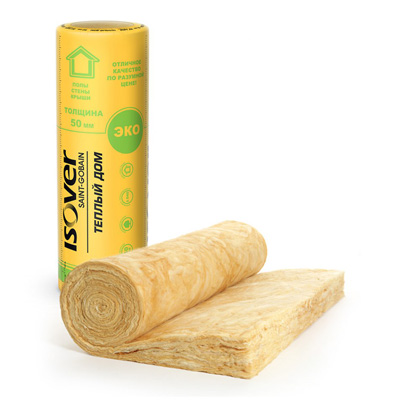
In the first place in this category of rating goods, known to the whole world. Glass wool for the home is available in rolls with a cross section of 5 cm and a width of 55 cm. During production, the company uses the patented TEL technology, which is distinguished by high environmental friendliness. Insulation is suitable for use in the house on the roof of a sloping and straight shape, in floors and wall partitions. The product conforms to ISO9001 and EN13162 standards. In addition to heat insulation, it contributes to noise protection. According to thermal conductivity, the substance has an index of 0.040 W / (m * K). Buyers in the reviews note the affordable price and long service life with proper protection from water.
Our experts added insulation to the rating due to a convenient release form in rolls from 5.5 to 7 meters long. This is practical when filling walls in plasterboard partitions to immediately close the floor-to-ceiling space and dispense with a minimum of cuts. Thickness 50 mm is well suited for profile width.
Virtues
- meets hygienic standards (can be used in childcare facilities);
- does not burn;
- completely from natural materials;
- elastic and does not require exact dimensions when cutting;
- lets steam out of the house.
disadvantages
- bad form;
- wet properties deteriorate;
- inconvenient to lay;
- average thermal conductivity.
Ursa geo
Rating: 4.8
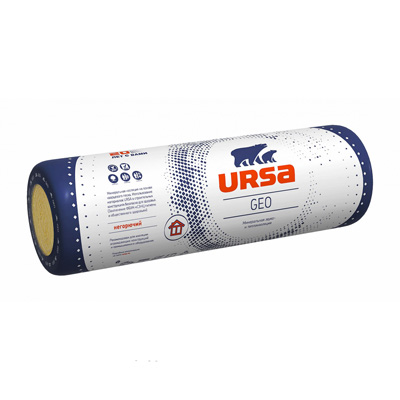
In the second place in the rating of the glass wool category is a domestic brand, which is often used as a common noun when specifying the type of insulation. Now this product is known throughout the CIS and is in high demand. The thickness of the insulation for the house varies from 5 to 10 cm, and the width of the roll is 120 cm. The square meter weighs 1 kg (at a section of 10 cm), which is convenient for calculating the mass on the supporting structures. Glass wool is allowed to insulate not only the walls, floor and roof in the house, but also chimney pipes, heating, ventilation. The product belongs to the fire hazard class KM0. In their reviews, the masters like vapor permeability, which is 0.64 mg / mcPa, but its thermal conductivity indicator is inferior to its counterparts and is in the range 0.040-0.046 W / (m * K).
The product is listed in the rating as the best for cattle roofing and floor insulation in the house, as it is also available in convenient rolls. At the buyer's choice, there can be two rolls of 6 m each in one package, or one roll, 10 m long. When installed in lagging floors, this allows you to stretch one roll immediately along the length of the room and save time.
Virtues
- glass wool does not burn;
- light weight simplifies transportation and stowage;
- does not have a serious impact on the foundation;
- high sound insulation;
- compatible with wood, aerated concrete, foam blocks, bricks.
disadvantages
- low density of 11 kg / m3;
- gets wet and changes shape;
- inconvenient to lay because of increased barb.
The best polyester fiber insulation
Polyester fiber is produced by processing plastic containers and other raw materials, which contributes to the preservation of the environment. As a result, multidirectional synthetic fibers are obtained that pass steam well, but delay heat exchange. In appearance and characteristics of the substance is similar to the padding polyester.
Shelter EkoStroy SHES Arctic
Rating: 4.9
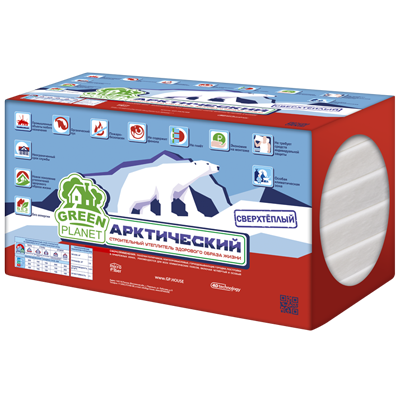
This is the latest product in the rating, produced by MicroFiber technology.Insulation is obtained with multidirectional villi, creating an elastic layer with a constantly maintained form. The effect of the firm is in the easy passage of steam. Another nanotechnology was able to achieve the hollow structure of the villi, so that the temperature is delayed better and the sounds are absorbed. The substance is hypoallergenic and does not have phenol. According to environmental performance, cleanliness is 100%. Thermal conductivity is at a minimum level of 0.031 W / (m * K), which buyers like in reviews. Insulation does not rot and is of no interest to rodents.
Our experts included the product in the rating as the best for house insulation in a cold region, which is confirmed by the name “Arctic”. 100 mm of this material is replaced by the efficiency of 125 mm of mineral wool, therefore, it will be possible to achieve high thermal insulation with a smaller layer thickness.
Virtues
- low thermal conductivity;
- water repellency;
- does not decay and is not attractive to rodents;
- service life of 50 years;
- need less thickness compared to other materials.
disadvantages
- high price;
- weak but sustains burning;
- emits harmful smoke when ignited.
Attention! This rating is subjective, is not advertising and does not serve as a guide to the purchase. Before buying, you should consult with a specialist.


